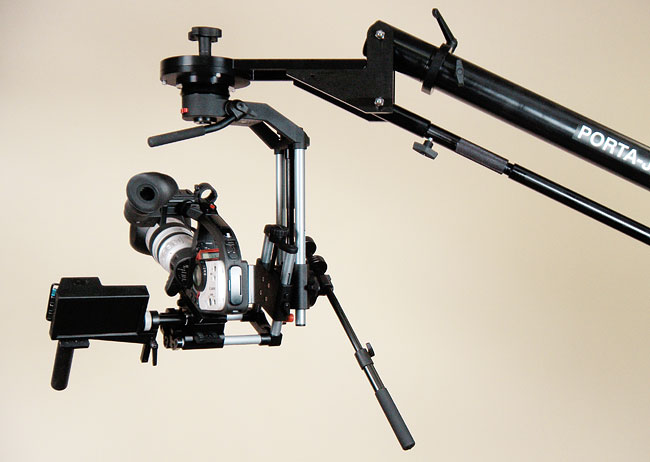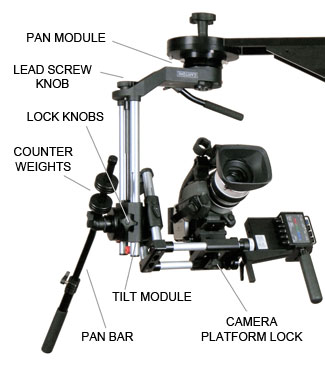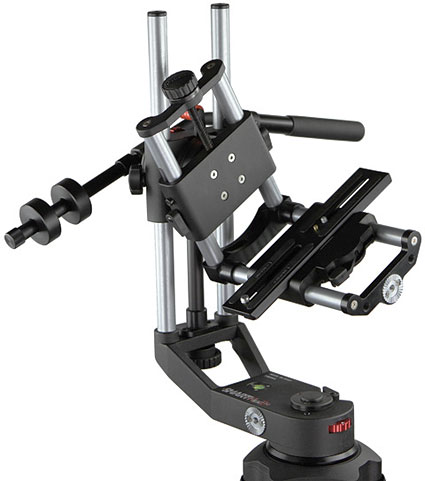The Cartoni Lambda 10 (formerly called the Smart Head) $2995 |
|||||||||||||||
| An Underslung/Overslung Head for cameras weighing up to 22 lbs. (10kg) |
|||||||||||||||
|
|||||||||||||||
|
|||||||||||||||
 |
|||||||||||||||
 |
|||||||||||||||
Balancing instructions for Cartoni Labmda 10 1) Mount the Smart Head to a tripod or to an underslung 100mm cup on a jib arm.  2) Attach the pan bar with counterweights to the head, but before engaging the teeth of the pan bar to the teeth on the head, balance the handle itself. Extend the handle to the desired length. Add any pan arm accessories needed such as a remote camera controller. Adjust the counterweights until they balance the handle. Then lock into position. (By balancing the handle independently of the head, you will be able to change the angle of the handle at any time without throwing off the balance of the camera. If you need to shorten or lengthen the handle at a later time, you will need to re-balance the handle.) 3) Unlock both the pan and tilt modules, and select the zero drag setting. 4) Mount the camera onto the head. (If you are planning to further accessorize your camera, do it now, before proceeding to the balancing stage.) Adjust the sliding plate to center the camera's weight fore and aft. 5) Adjust the height of the tilt mechanism on its vertical supports so the camera can tilt fully through the head's 360 degree range of motion. To adjust, release the two lock knobs, and position by turning the lead screw knob.  6) Adjust the L-Shaped camera support up and down to position the center of gravity of the camera on the tilt axis of the head. To do this, release the two lock levers, tilt the camera 90 degrees so that it is pointing straight down, then adjust the lead screw until the camera stays balanced when you let go of the pan bar. The camera should remain balanced at any angle through the 360 degree tilt range. 7) Move the camera platform left or right to center the camera's lens axis on the head's pan axis. The lock is on the underneath side of the camera platform. 8) Choose one of three available fluid module settings for the pan and tilt. You may want a relatively heavy drag for tripod work, but you will want a very light drag when using a jib arm. Using too heavy of a drag setting may cause you to inadvertently boom the jib up or down when all you wanted to do was to tilt the head. You will want a very light, floating feeling when on a jib. 9) If using the Losmandy Balanced Monitor Bracket, remember to balance the monitor also. Move the monitor fore and aft on its mounting plate to center the weight of the monitor. Then move the monitor support plate up or down to get the center of gravity of the monitor positioned on the tilt axis. Once balanced, the monitor will always remain in the desired position as you let go. This is especially helpful on a jib when doing high or low angle work. |



